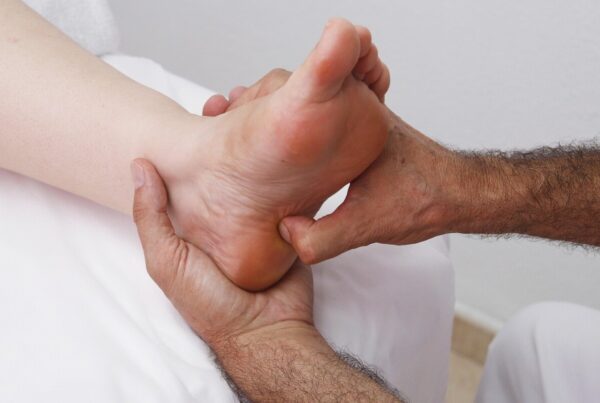Still working from home? Or working between home and the office? Here is a great checklist to help you quickly and effectively set up your home or work office.
Chair/Desk Height:
The Chair – Desk relationship is key, so make sure you have an appropriate chair and desk. Preferably you will have a chair or desk that is adjustable in at least height. If you don’t currently have a suitable desk or chair, and you are considering working from home ongoing, you should invest in an appropriate workplace set up.
Step 1: The ideal Desk height will allow for your forearms to rest on the table while you have your arms by your side and elbows bent to 90-100degrees. This can be adjusted via desk height or seat adjustment.
Step 2: The Chair height of the chair should allow your feet to be flat on the ground or foot rest with your hips and knees bent at 90-100 degrees.
If you are unable to have your elbows bent at 90-100 degrees and have your feet on the ground, you should look at whether you can:
- Raise the height of the chair and use a foot rest.
- Lower the Table height to allow for appropriate upper limb positioning.
Chair Support:
As you may have quickly discovered, your lounge or dinner table is not the ideal workstation alternative.
It is a good idea to invest in a suitable chair that has adjustable settings (seat and back rest height and tilt adjustments) as well as lumbar support. Office chairs have been specifically designed for supporting your posture for extended periods of sitting, unfortunately your dining table chairs and/or lounge have not had the same engineering or ergonomic design.
One quick fix that can be very effective, is the use of a D-roll (lumbar roll) or a rolled up towel. Place the D-roll or rolled up towel in the lumbar region of your chair. To know whether this is a suitable fix for you, give it a go and read this previous blog which shows you how to test if your chair is supportive enough.
If you are using a Laptop it is highly recommended that you are using an external keyboard, external mouse and screen. You cannot achieve a correct ergonomic set-up using a laptop alone.
Keyboard Position:
Your keyboard should be 10-25cm from the edge of your desk. Remember it is important to maintain elbows bent at 90-100 degrees by your side while measuring this 10-25cm keyboard distance.
Having a space less than 10cm does not provide enough forearm support, which may lead to an unnecessary increase in muscle activation of neck and upper trapezius.
Having a gap greater than 25-30cm encourages reaching, which may promote poor posture, and may increase the potential for upper limb overuse musculoskeletal issues.
For More information regarding Keyboard positioning, and keyboard options please read our previous blog about Keyboard Ergonomics.
Mouse Position:
The mouse should be to the side of the keyboard. This should remain reasonably close. Placing your mouse too far away from the edge of the keyboard may unnecessarily increase the use of your neck and shoulder muscles.
For more information regarding mouse positioning and options, and mouse options please read our previous blog.
Screen Positioning:
Screen height: Adjust the monitor height so that the top of the screen is at or slightly below eye level. When looking at the middle of the screen, your eyes should be looking slightly downwards.
Screen Distance: The distance of your screen from the edge of the desk will be dependent on the size of your screen. On average I recommend the distance to be 50cm from eye level. A quick test using your arm’s length to determine this distance.
Screen Glare: It is important to consider if there is any glare coming off your screen from external lighting, this can be adjusted by tilting the screen or otherwise moving the position of your workstation.
Hopefully these tips will help with your desk set up! If you are experiencing any symptoms of discomfort or pain, and you feel that your workstation may be a contributing factor, then you will greatly benefit from a Workplace Ergonomic Assessment from one of our Physios at Bend + Mend. We can perform these assessments in person or via Telehealth depending on your needs.





